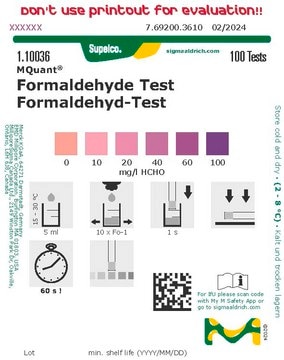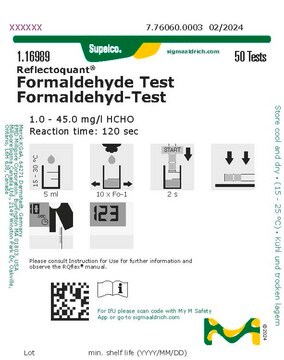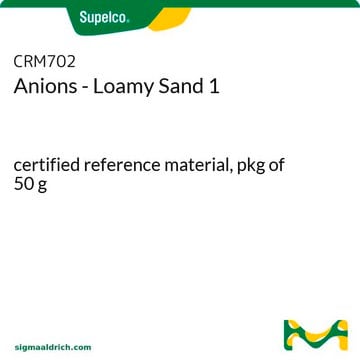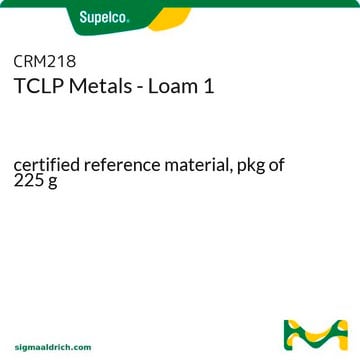MAK131
Formaldehyde Assay
sufficient for 100 fluorometric tests
About This Item
Productos recomendados
usage
sufficient for 100 fluorometric tests
detection method
fluorometric
relevant disease(s)
cancer
storage temp.
2-8°C
Categorías relacionadas
General description
Application
- Modified Natural Rubber as a Simple Chemical Sensor with Smartphone Detection for Formaldehyde Content in a Seafood Sample.: This article explores the use of modified natural rubber as a chemical sensor, paired with smartphone detection, to measure formaldehyde content in seafood. This approach highlights the potential for accessible and mobile detection systems in food safety applications (Yeerum et al., 2022).
- Optical enzymatic formaldehyde biosensor based on alcohol oxidase and pH-sensitive methacrylic-acrylic optode membrane.: The study develops an optical enzymatic biosensor for formaldehyde, using alcohol oxidase with a pH-sensitive membrane, offering a novel approach for quick and sensitive detection in various analytical applications (Nurlely et al., 2022).
Features and Benefits
Suitability
Principle
signalword
Danger
Hazard Classifications
Acute Tox. 4 Oral - Aquatic Chronic 2 - Eye Dam. 1 - Met. Corr. 1 - Skin Corr. 1A - STOT SE 1 - STOT SE 3
target_organs
Eyes,Central nervous system, Respiratory system
Storage Class
6.1C - Combustible acute toxic Cat.3 / toxic compounds or compounds which causing chronic effects
Certificados de análisis (COA)
Busque Certificados de análisis (COA) introduciendo el número de lote del producto. Los números de lote se encuentran en la etiqueta del producto después de las palabras «Lot» o «Batch»
¿Ya tiene este producto?
Encuentre la documentación para los productos que ha comprado recientemente en la Biblioteca de documentos.
Los clientes también vieron
Nuestro equipo de científicos tiene experiencia en todas las áreas de investigación: Ciencias de la vida, Ciencia de los materiales, Síntesis química, Cromatografía, Analítica y muchas otras.
Póngase en contacto con el Servicio técnico











